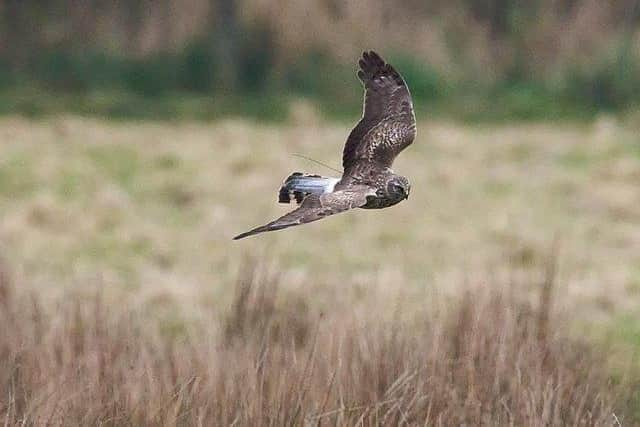Hen Harriers: persecuted birds of prey still at risk in Yorkshire, charity warns
A new report by the charity says that while numbers of the bird are on the increase, in large swathes of the country including the North York Moors, they are still not found.
The number of breeding pairs of hen harriers - described by the RSPB as the most “intensely persecuted bird” - has risen from four to 54 since the last survey in 2016.
Advertisement
Hide AdAdvertisement
Hide AdBut there are no breeding pairs recorded on the North York Moors or in the Peak District despite both National Parks having “abundant areas of their ideal habitat.”


The increase in breeding hen harriers in England follows the launch of the Hen Harrier Action Plan by Defra, which aims to recover the bird in England and change attitudes towards them to reduce the numbers being illegally killed.
Mike Shurmer, head of species for RSPB England, said: “England has seen a significant increase in breeding Hen Harriers since the last survey, which is very welcome news, but the starting point was shockingly low, and well below where we would expect healthy populations of these birds to be given the habitat available to them.
“The reasons for Hen Harriers continuing to be far below their potential population are complex, but one of the primary causes is that continued illegal killing, typically associated with intensive grouse moor management, is stifling their full recovery.
Advertisement
Hide AdAdvertisement
Hide Ad“The work we and others have been doing to restore these populations is incredibly important, and we need to make sure it continues and that we step up our efforts to tackle the illegal killing of birds of prey.”
Explaining why hen harrier numbers may be low in Yorkshire’s National Parks, Mr Shurmer said: “You’ve got to be really careful that you don’t draw conclusions as to why they might be low in a precise location.
“The issue doesn’t seem to be habitat. What you find in places like the Peak District and the North York Moors is there’s plenty of habitat, but the key thing is for birds to settle and breed there.
“They will turn up if the habitat is good, but it might be that they haven’t established a foothold there, and that could come with time.
Advertisement
Hide AdAdvertisement
Hide Ad“It is important that appropriate measures are put in place to protect breeding hen harriers, wherever they occur, and tackle illegal persecution to enable them to recover.”
It comes months after a report found 38 Hen Harriers have been persecuted or vanished in Northern England since 2022.
The Birdcrime report said that 38 hen harriers have disappeared in suspicious circumstances in Northern England since January 2022 alone, including 14 birds (37 per cent) from the Government-backed brood management scheme.
The Yorkshire Dales saw the highest density of confirmed cases of birds killed, with eight tagged birds having been illegally killed or “suspiciously disappearing.”
Advertisement
Hide AdAdvertisement
Hide AdNorth Yorkshire Police carried out an investigation into the death of one tagged bird, who was found to have been illegally killed, but insufficient evidence meant no-one was charged.
Stephanie Bird-Halton, Director of National Delivery at Natural England, said:
“We are pleased to work with the RSPB to monitor Hen Harriers and encouraged that populations have increased by over 1,000% since the Hen Harrier Action Plan was first launched. This shows how through partnership work it is possible to reverse nature’s decline, even in the most challenging of circumstances.
“However, illegal killing still casts a shadow over valuable work to recover Hen Harriers. We will continue to support police investigations into bird of prey crime as well as improving monitoring and conservation management to achieve the long-term recovery of this iconic species.”
Comment Guidelines
National World encourages reader discussion on our stories. User feedback, insights and back-and-forth exchanges add a rich layer of context to reporting. Please review our Community Guidelines before commenting.